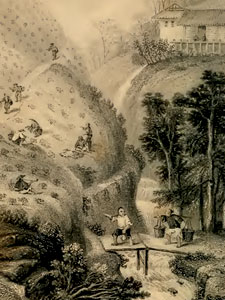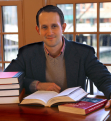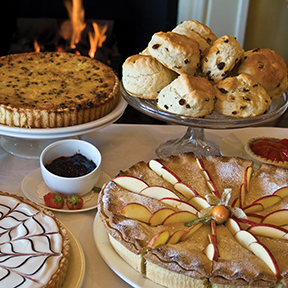Black Tea
But the bulk of the tea that westerners consumed was common black tea known as Bohea (boo-hee), a corruption of the name for the Wuyi mountains south of Shanghai. The tea was so popular, that the word Bohea became the slang term for tea.
John Adams diary entry from December 17, 1773 reads in part:
Last Night 3 Cargoes of Bohea Tea were emptied into the Sea. This is the most magnificent Movement of all. There is a Dignity, a Majesty, a Sublimity, in this last Effort of the Patriots, that I greatly admire.
One London publication described Bohea as infusing a dark and dull brownish red color which, on standing, deposits a black sediment. The liquor is sometimes faint, frequently smoky, but always unpleasant. The superior form of Bohea is known as Congou.
Seventy percent of the tea imported by the East India Company was Congou (kung-foo.) It brewed a deep transparent red liquor with a strong and pleasant bitter flavor. The addition of milk surely added to the enjoyment of this beverage.
Souchong is a classic black tea from the Wuyi Mountains of Fujian province which has a very distinctive smoky aroma. The original term souchong (xiaozhong) means “small leaf variety,” and refers to a family of tea cultivars that existed in this famous tea-growing region of Fujian since 1717. The souchong teas drunk by early colonists would have had a very slight smoky aroma which the tea leaves picked up during the drying process. Most of today’s souchong exports are intentionally smoked with smoldering pinewood and are called lapsang souchong. 12 chests of Souchong weighing a total of 684 pounds were aboard the ships in Boston Harbor.
Certainly, all the teas tossed overboard would disappoint a modern tea drinker because they were way past their prime. The Boston teas were plucked in 1770 and 1771, transported by ship to London warehouses where they sat for a couple of years, and finally placed aboard ships bound for the colonies in October 1773.
Forget taxation! The colonists should have been more offended by the slight regard King George showed toward their good tastes!



